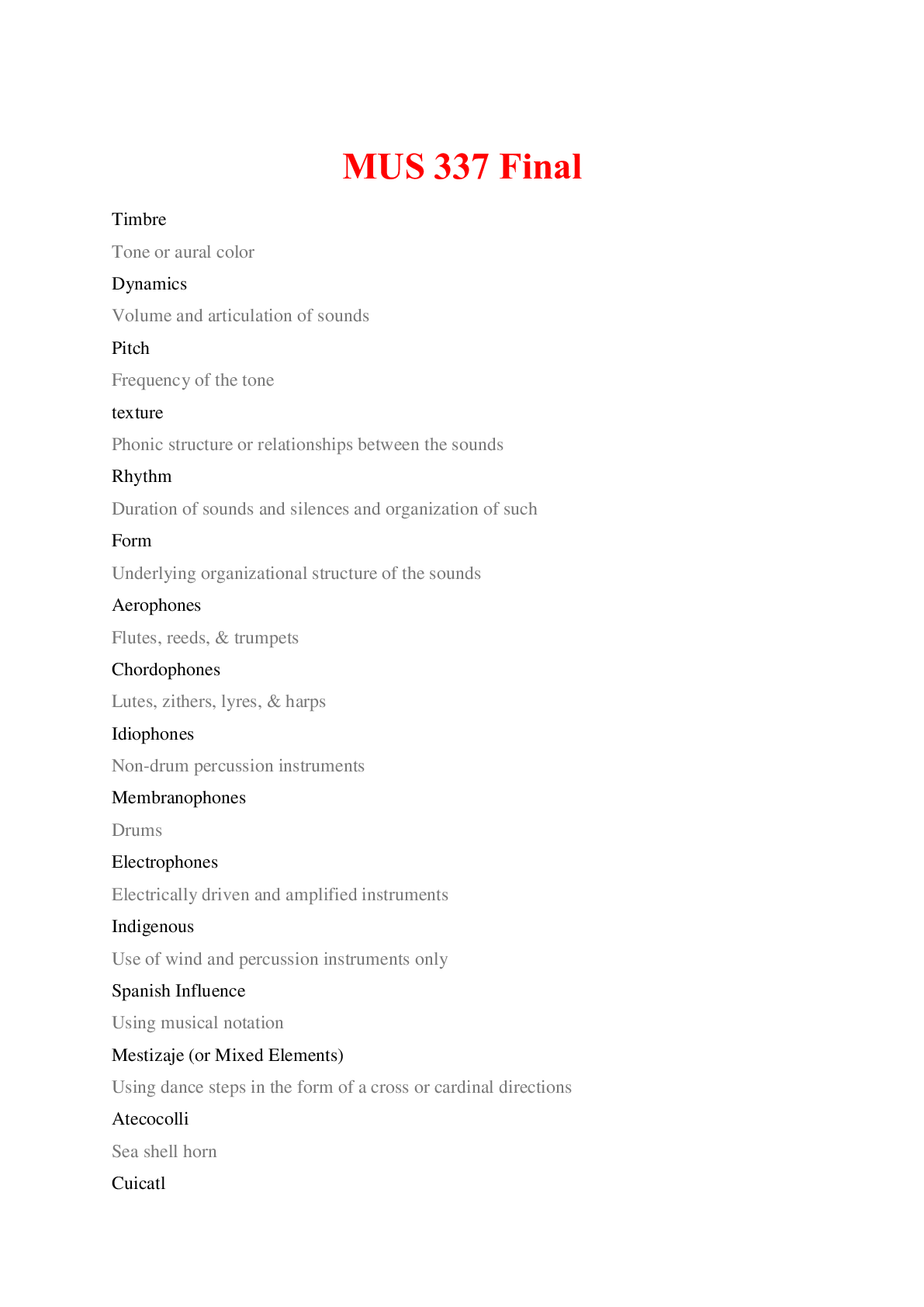*NURSING > QUESTIONS & ANSWERS > A nurse answers a call light and finds a client anxious (All)
A nurse answers a call light and finds a client anxious
Document Content and Description Below
A nurse answers a call light and finds a client anxious, short of breath, reporting chest pain, and having a blood pressure of 88/52 mm Hg on the cardiac monitor. What action by the nurse takes prior... ity? a. Assess the client's lung sounds. b. Notify the Rapid Response Team. c. Provide reassurance to the client. d. Take a full set of vital signs. b This client has manifestations of a pulmonary embolism, and the most critical action is to notify the Rapid Response Team for speedy diagnosis and treatment. The other actions are appropriate also but are not the priority. A client is admitted with a pulmonary embolism (PE). The client is young, healthy, and active and has no known risk factors for PE. What action by the nurse is most appropriate? a. Encourage the client to walk 5 minutes each hour. b. Refer the client to smoking cessation classes. c. Teach the client about factor V Leiden testing. d. Tell the client that sometimes no cause for disease is found. c Factor V Leiden is an inherited thrombophilia that can lead to abnormal clotting events, including PE. A client with no known risk factors for this disorder should be referred for testing. Encouraging the client to walk is healthy, but is not related to the development of a PE in this case, nor is smoking. Although there are cases of disease where no cause is ever found, this assumption is premature. A client has a pulmonary embolism and is started on oxygen. The student nurse asks why the client's oxygen saturation has not significantly improved. What response by the nurse is best? a. "Breathing so rapidly interferes with oxygenation." b. "Maybe the client has respiratory distress syndrome." c. "The blood clot interferes with perfusion in the lungs." d. "The client needs immediate intubation and mechanical ventilation." c A large blood clot in the lungs will significantly impair gas exchange and oxygenation. Unless the clot is dissolved, this process will continue unabated. Hyperventilation can interfere with oxygenation by shallow breathing, but there is no evidence that the client is hyperventilating, and this is also not the most precise physiologic answer. Respiratory distress syndrome can occur, but this is not as likely. The client may need to be mechanically ventilated, but without concrete data on FiO2 and SaO2, the nurse cannot make that judgment. A client is on intravenous heparin to treat a pulmonary embolism. The client's most recent partial thromboplastin time (PTT) was 25 seconds. What order should the nurse anticipate? a. Decrease the heparin rate. b. Increase the heparin rate. c. No change to the heparin rate. d. Stop heparin; start warfarin (Coumadin). b For clients on heparin, a PTT of 1.5 to 2.5 times the normal value is needed to demonstrate the heparin is working. A normal PTT is 25 to 35 seconds, so this client's PTT value is too low. The heparin rate needs to be increased. Warfarin is not indicated in this situation. A client is hospitalized with a second episode of pulmonary embolism (PE). Recent genetic testing reveals the client has an alteration in the gene CYP2C19. What action by the nurse is best? a. Instruct the client to eliminate all vitamin K from the diet. b. Prepare preoperative teaching for an inferior vena cava (IVC) filter. c. Refer the client to a chronic illness support group. d. Teach the client to use a soft-bristled toothbrush. b Often clients are discharged from the hospital on warfarin (Coumadin) after a PE. However, clients with a variation in the CYP2C19 gene do not metabolize warfarin well and have higher blood levels and more side effects. This client is a poor candidate for warfarin therapy, and the prescriber will most likely order an IVC filter device to be implanted. The nurse should prepare to do preoperative teaching on this procedure. It would be impossible to eliminate all vitamin K from the diet. A chronic illness support group may be needed, but this is not the best intervention as it is not as specific to the client as the IVC filter. A soft-bristled toothbrush is a safety measure for clients on anticoagulation therapy. A nurse is caring for four clients on intravenous heparin therapy. Which laboratory value possibly indicates that a serious side effect has occurred? a. Hemoglobin: 14.2 g/dL b. Platelet count: 82,000/L c. Red blood cell count: 4.8/mm3 d. White blood cell count: 8.7/mm3 b This platelet count is low and could indicate heparin-induced thrombocytopenia. The other values are normal for either gender. A client appears dyspneic, but the oxygen saturation is 97%. What action by the nurse is best? a. Assess for other manifestations of hypoxia. b. Change the sensor on the pulse oximeter. c. Obtain a new oximeter from central supply. d. Tell the client to take slow, deep breaths. a Pulse oximetry is not always the most accurate assessment tool for hypoxia as many factors can interfere, producing normal or near-normal readings in the setting of hypoxia. The nurse should conduct a more thorough assessment. The other actions are not appropriate for a hypoxic client. A nurse is assisting the health care provider who is intubating a client. The provider has been attempting to intubate for 40 seconds. What action by the nurse takes priority? a. Ensure the client has adequate sedation. b. Find another provider to intubate. c. Interrupt the procedure to give oxygen. d. Monitor the client's oxygen saturation. c Each intubation attempt should not exceed 30 seconds (15 is preferable) as it causes hypoxia. The nurse should interrupt the intubation attempt and give the client oxygen. The nurse should also have adequate sedation during the procedure and monitor the client's oxygen saturation, but these do not take priority. Finding another provider is not appropriate at this time. An intubated client's oxygen saturation has dropped to 88%. What action by the nurse takes priority? a. Determine if the tube is kinked. b. Ensure all connections are patent. c. Listen to the client's lung sounds. d. Suction the endotracheal tube. c When an intubated client shows signs of hypoxia, check for DOPE: displaced tube (most common cause), obstruction (often by secretions), pneumothorax, and equipment problems. The nurse listens for equal, bilateral breath sounds first to determine if the endotracheal tube is still correctly placed. If this assessment is normal, the nurse would follow the mnemonic and assess the patency of the tube and connections and perform suction. A client is on a ventilator and is sedated. What care may the nurse delegate to the unlicensed assistive personnel (UAP)? a. Assess the client for sedation needs. b. Get family permission for restraints. c. Provide frequent oral care per protocol. d. Use nonverbal pain assessment tools. c The client on mechanical ventilation needs frequent oral care, which can be delegated to the UAP. The other actions fall within the scope of practice of the nurse. A nurse is caring for a client on mechanical ventilation. When double-checking the ventilator settings with the respiratory therapist, what should the nurse ensure as a priority? a. The client is able to initiate spontaneous breaths. b. The inspired oxygen has adequate humidification. c. The upper peak airway pressure limit alarm is off. d. The upper peak airway pressure limit alarm is on. d The upper peak airway pressure limit alarm will sound when the airway pressure reaches a preset maximum. This is critical to prevent damage to the lungs. Alarms should never be turned off. Initiating spontaneous breathing is important for some modes of ventilation but not others. Adequate humidification is important but does not take priority over preventing injury. A nurse is caring for a client on mechanical ventilation and finds the client agitated and thrashing about. What action by the nurse is most appropriate? a. Assess the cause of the agitation. b. Reassure the client that he or she is safe. c. Restrain the client's hands. d. Sedate the client immediately. a The nurse needs to determine the cause of the agitation. A nurse is preparing to admit a client on mechanical ventilation from the emergency department. What action by the nurse takes priority? a. Assessing that the ventilator settings are correct b. Ensuring there is a bag-valve-mask in the room c. Obtaining personal protective equipment d. Planning to suction the client upon arrival to the room b Having a bag-valve-mask device is critical in case the client needs manual breathing. The respiratory therapist is usually primarily responsible for setting up the ventilator, although the nurse should know and check the settings. Personal protective equipment is important, but ensuring client safety takes priority. The client may or may not need suctioning on arrival. A client is on mechanical ventilation and the client's spouse wonders why ranitidine (Zantac) is needed since the client "only has lung problems." What response by the nurse is best? a. "It will increase the motility of the gastrointestinal tract." b. "It will keep the gastrointestinal tract functioning normally." c. "It will prepare the gastrointestinal tract for enteral feedings." d. "It will prevent ulcers from the stress of mechanical ventilation." d Stress ulcers occur in many clients who are receiving mechanical ventilation, and often prophylactic medications are used to prevent them. Frequently used medications include antacids, histamine blockers, and proton pump inhibitors. Zantac is a histamine blocking agent. A client has been brought to the emergency department with a life-threatening chest injury. What action by the nurse takes priority? a. Apply oxygen at 100%. b. Assess the respiratory rate [Show More]
Last updated: 1 year ago
Preview 1 out of 22 pages
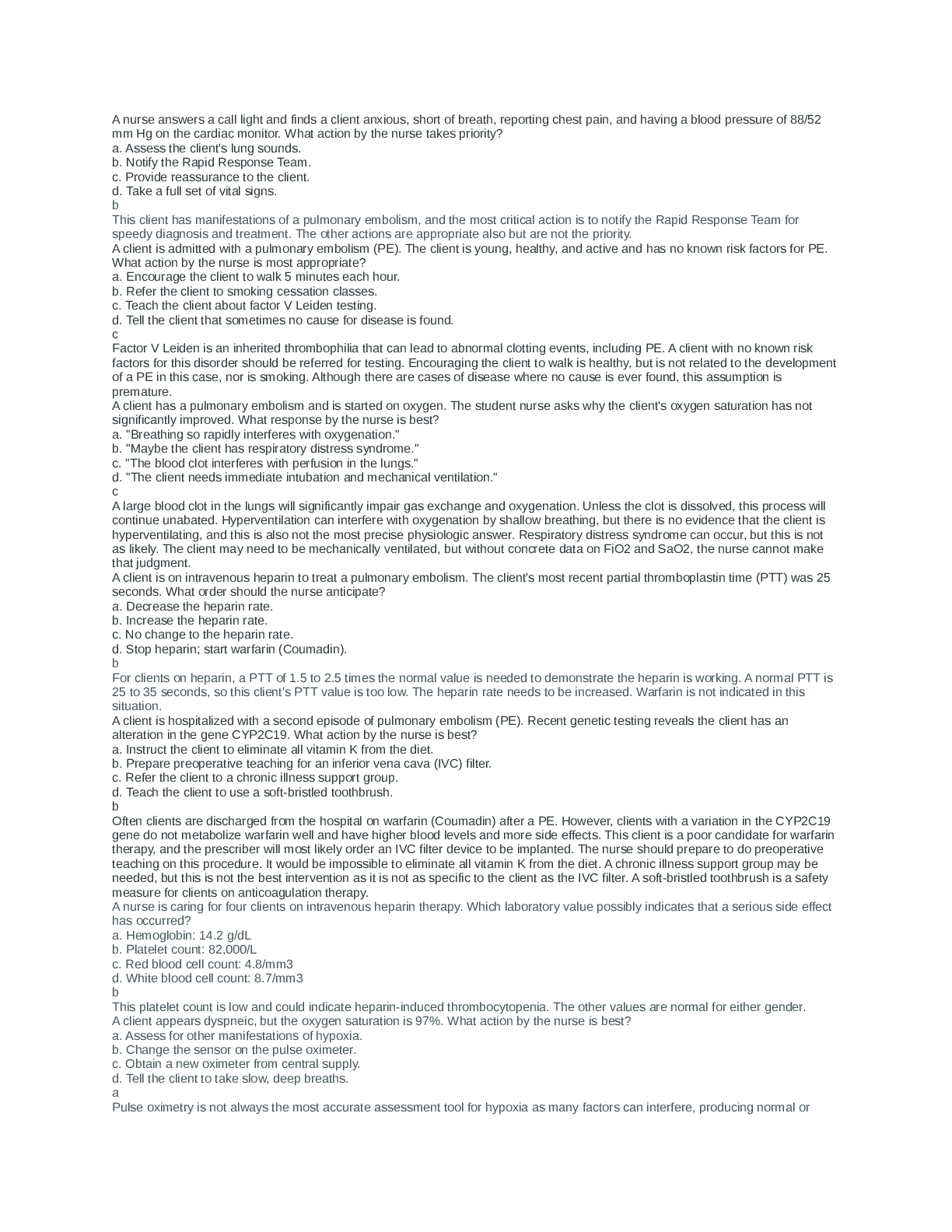
Reviews( 0 )
Document information
Connected school, study & course
About the document
Uploaded On
Nov 08, 2022
Number of pages
22
Written in
Additional information
This document has been written for:
Uploaded
Nov 08, 2022
Downloads
0
Views
242

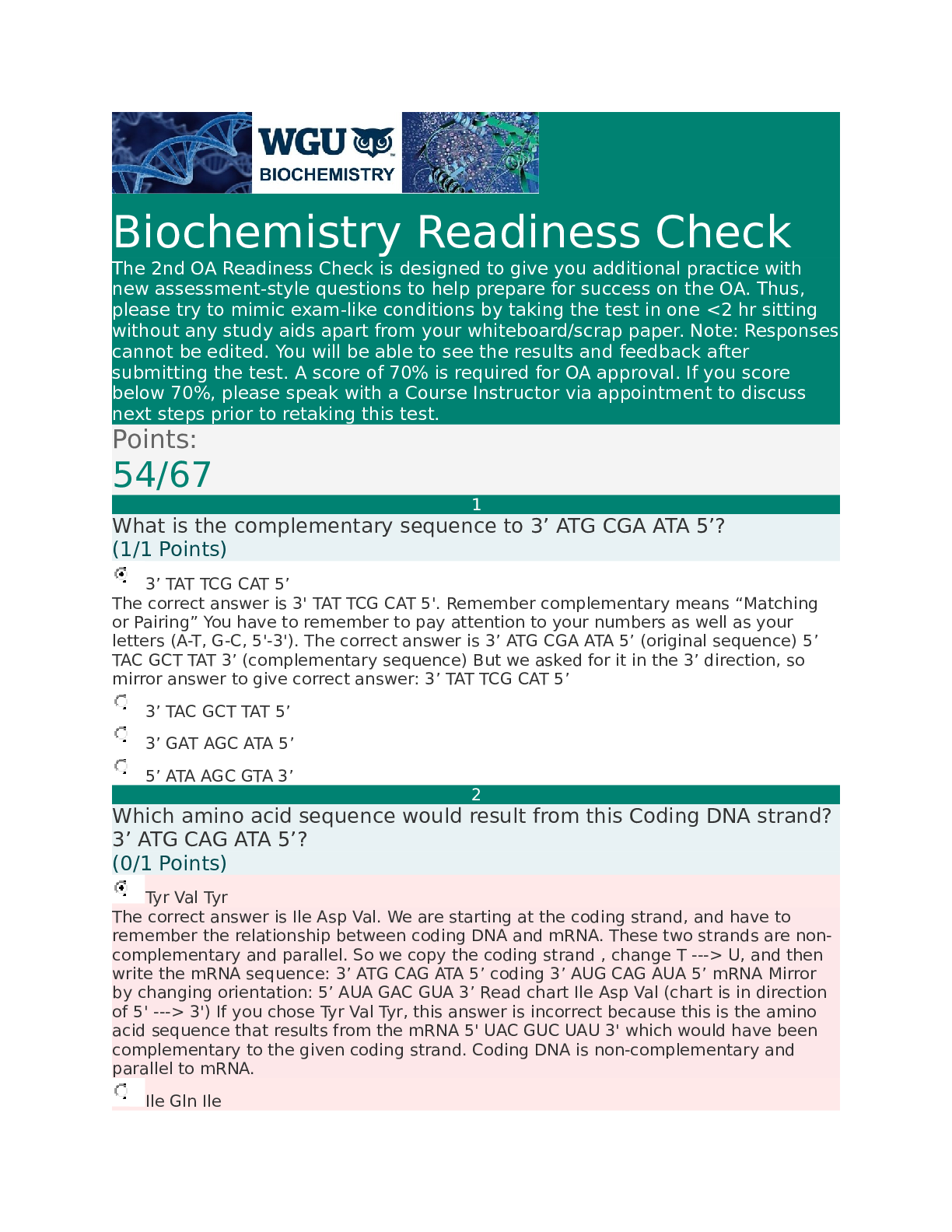
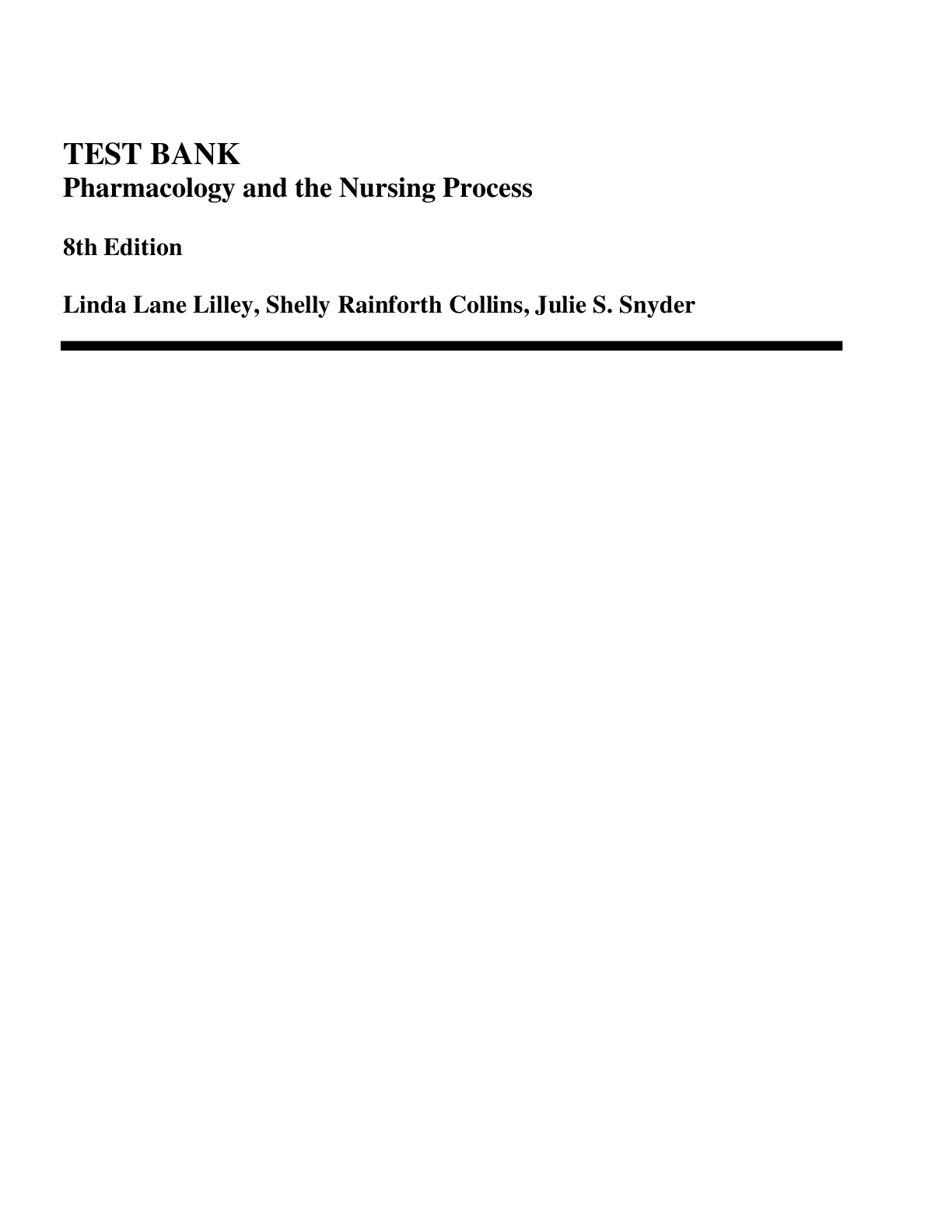
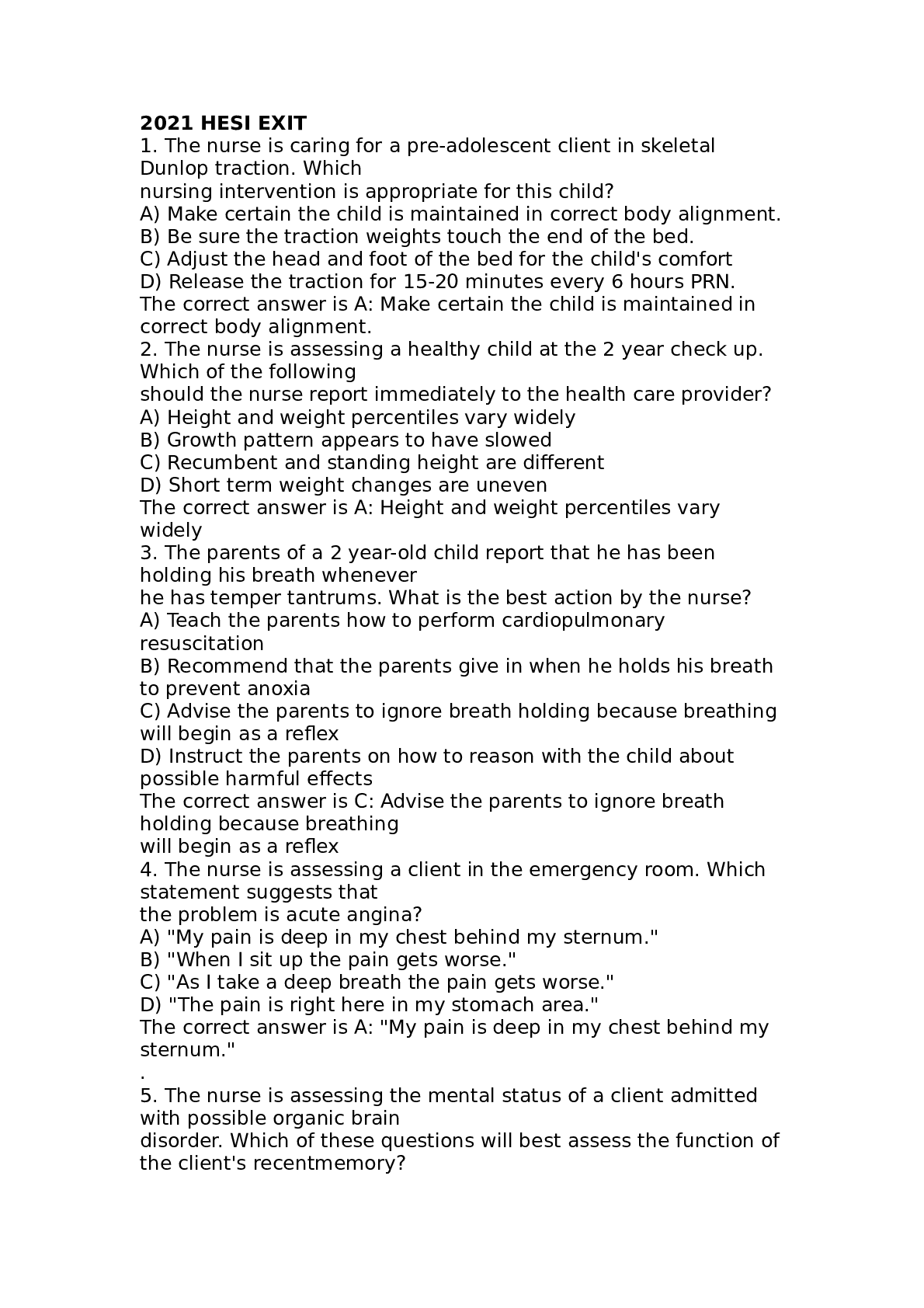


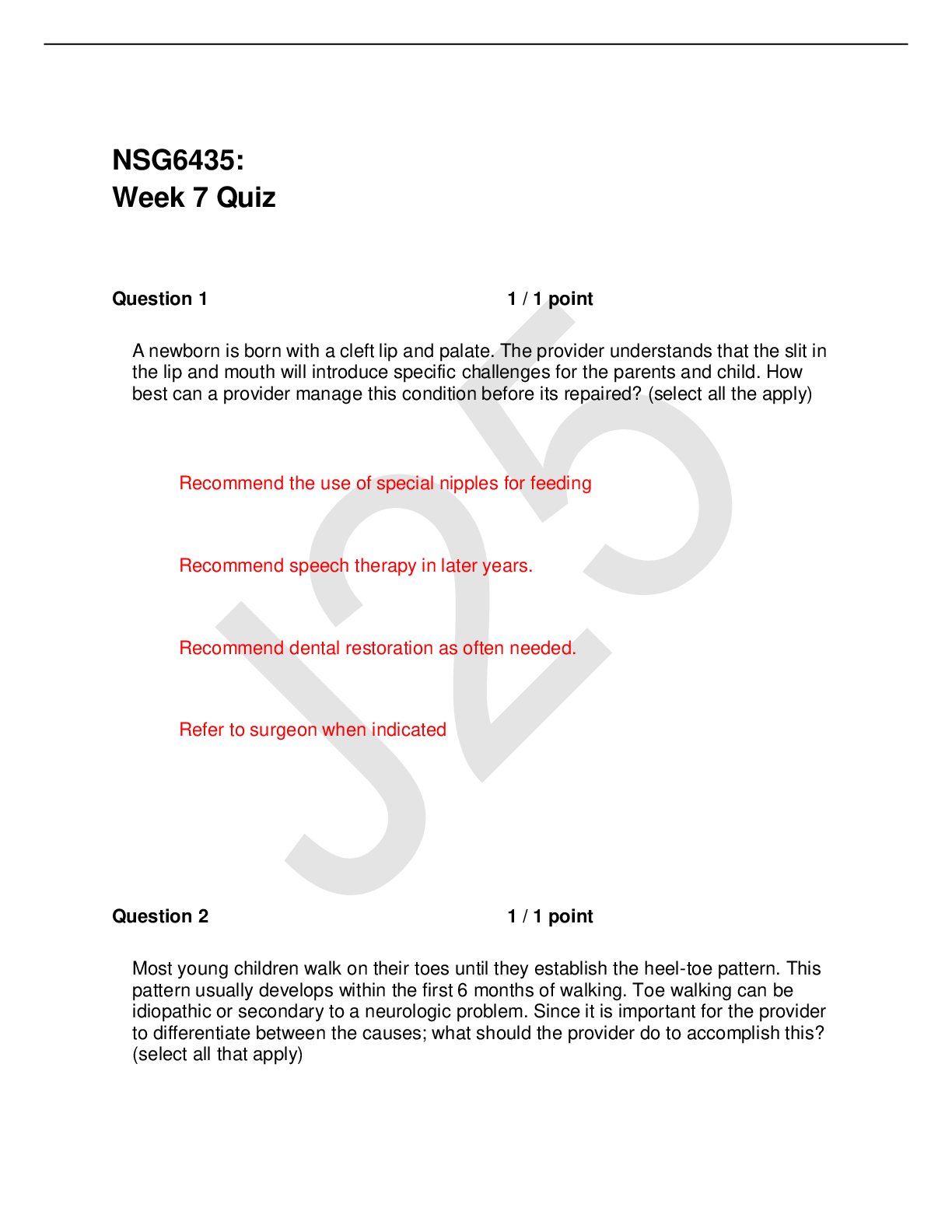

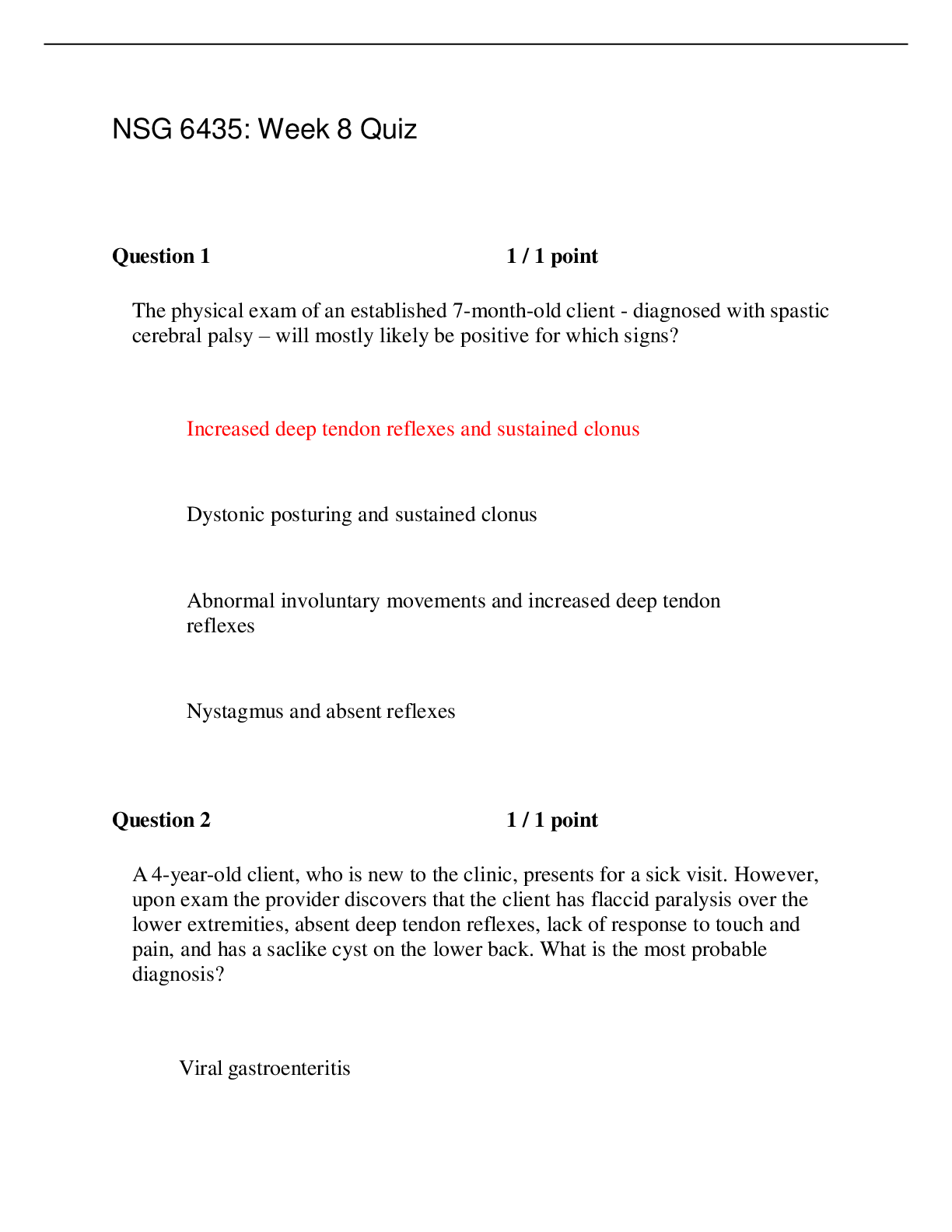
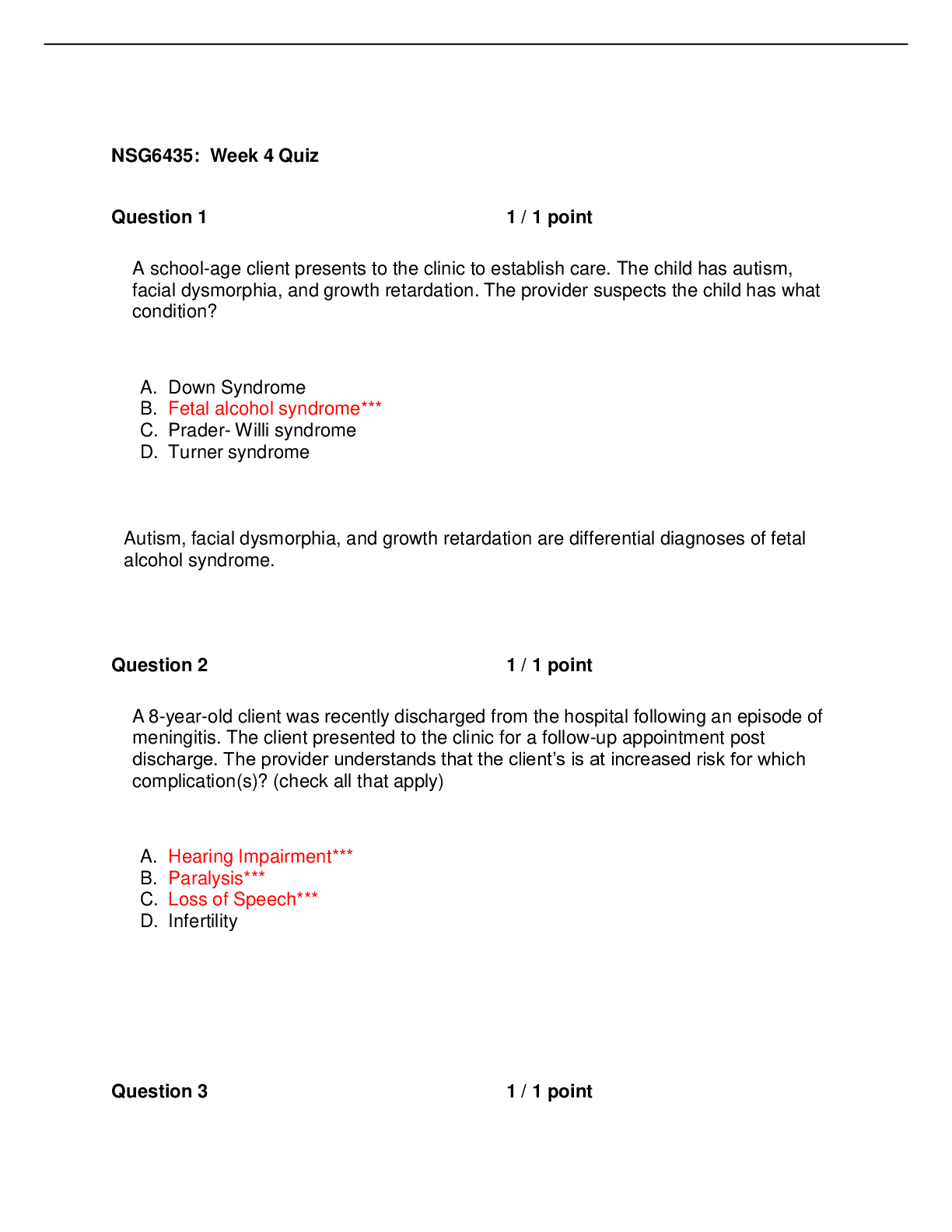
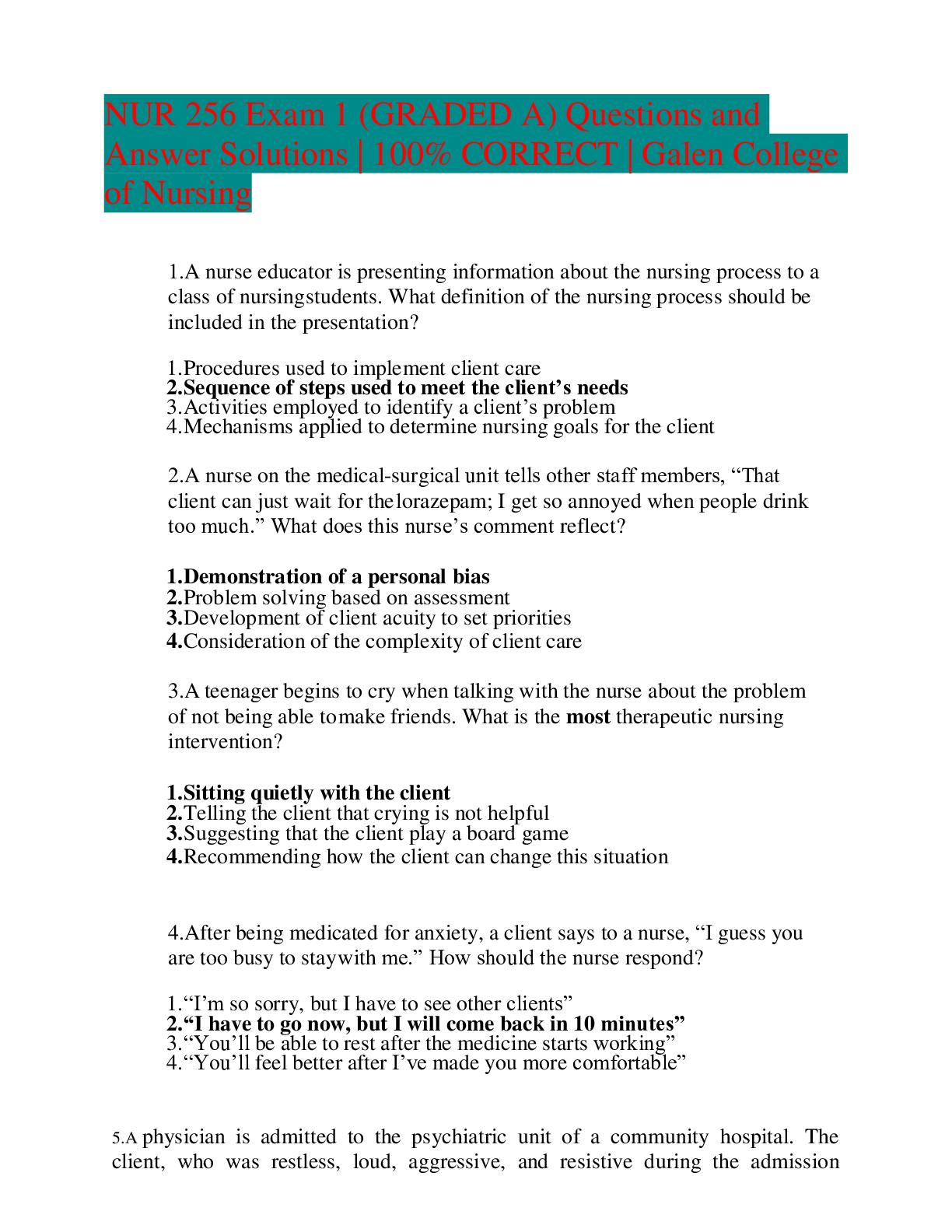


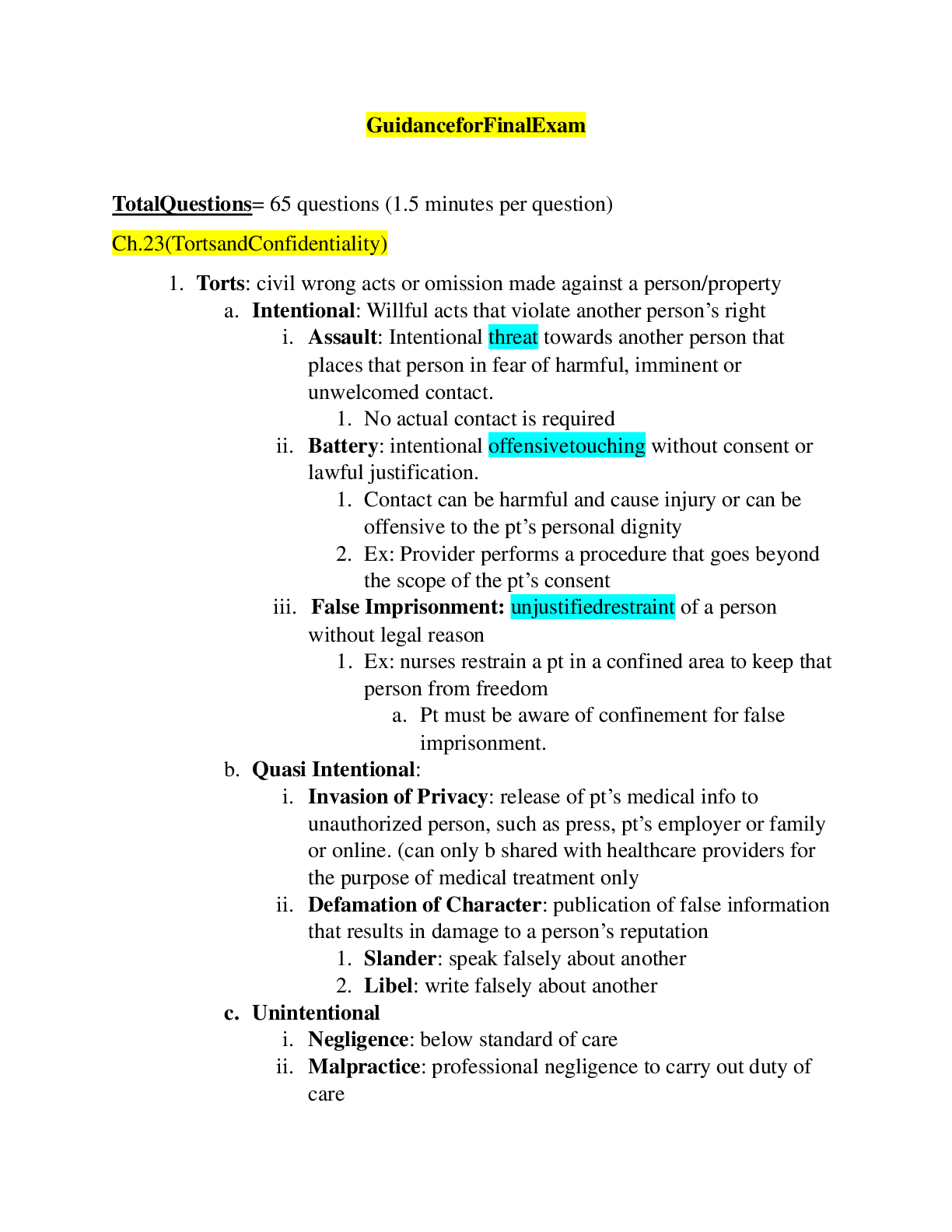
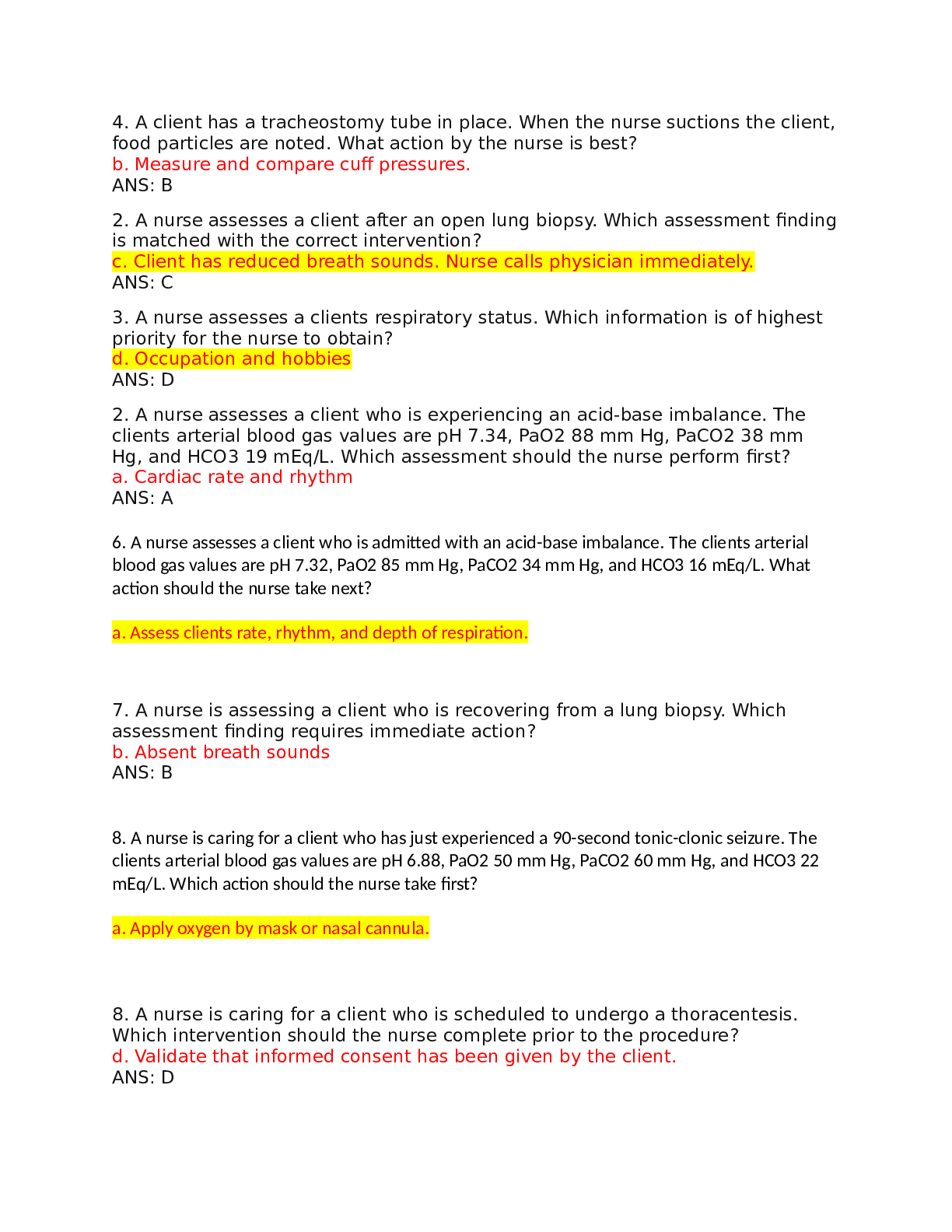
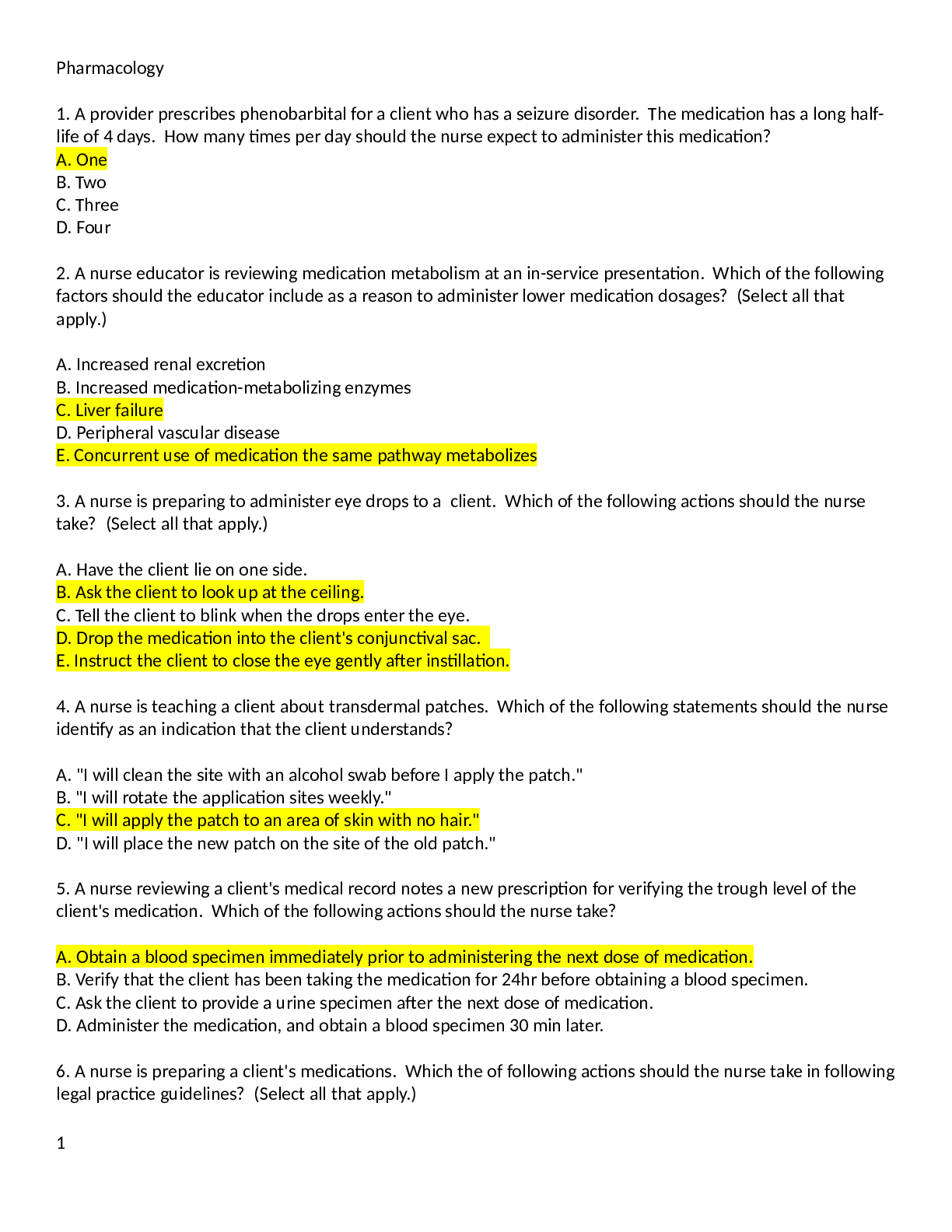

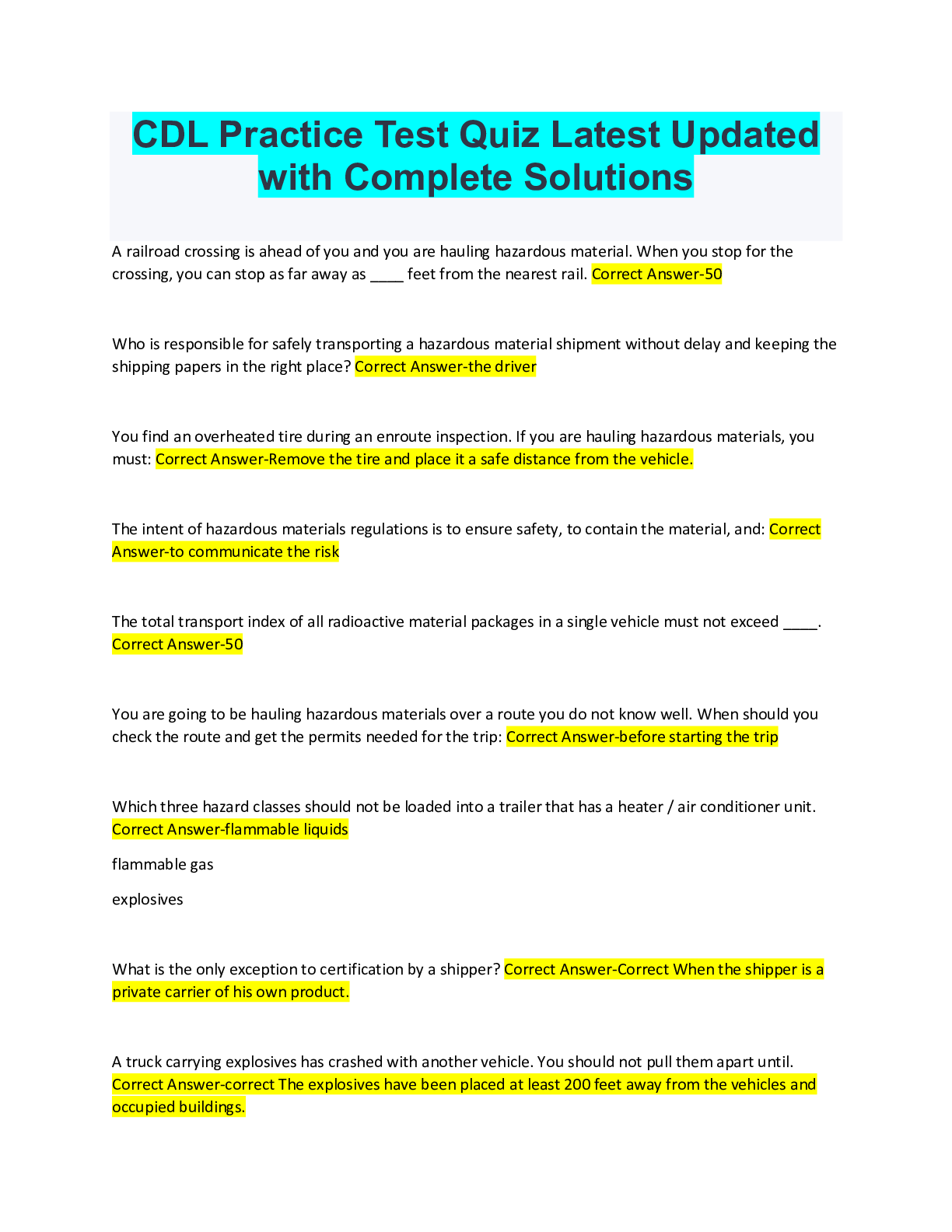

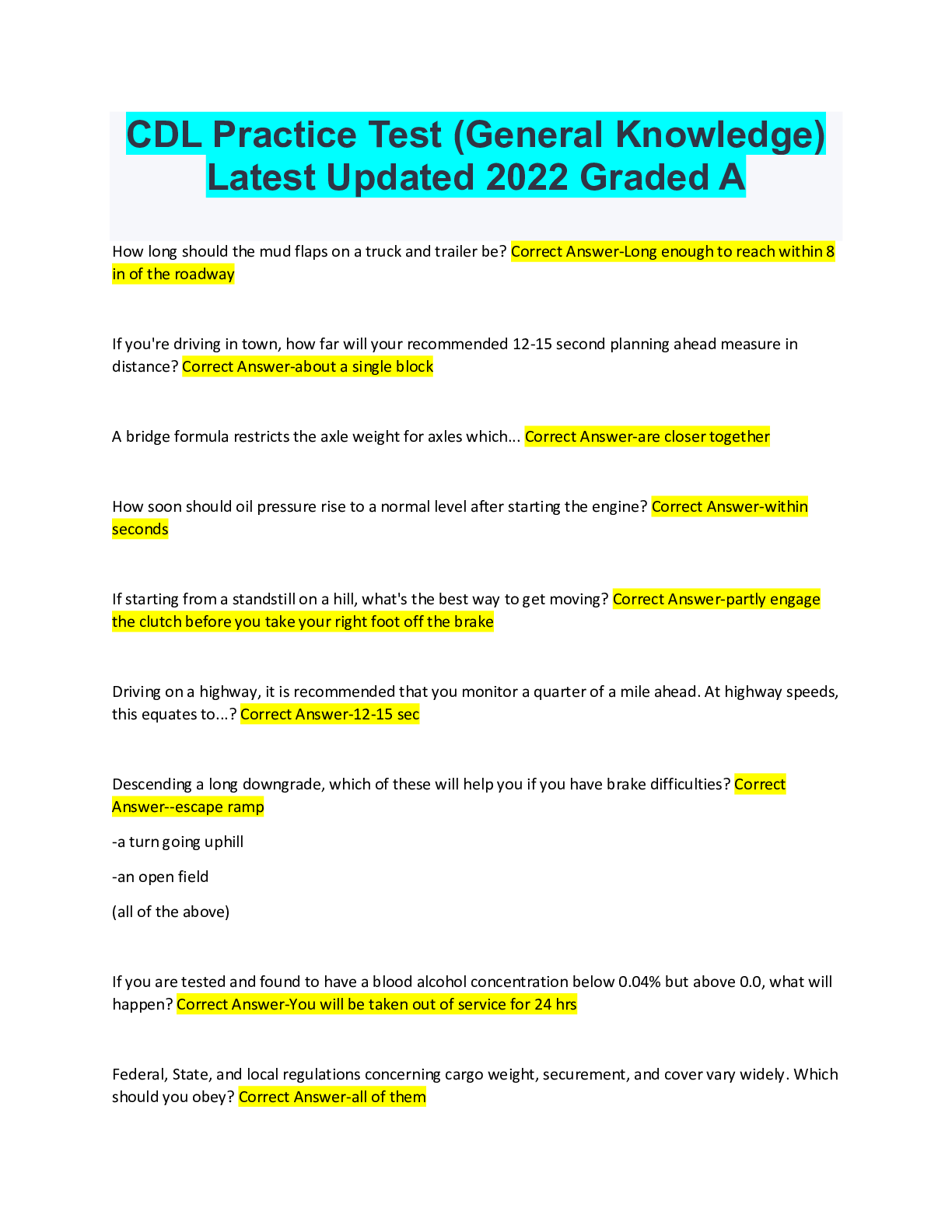

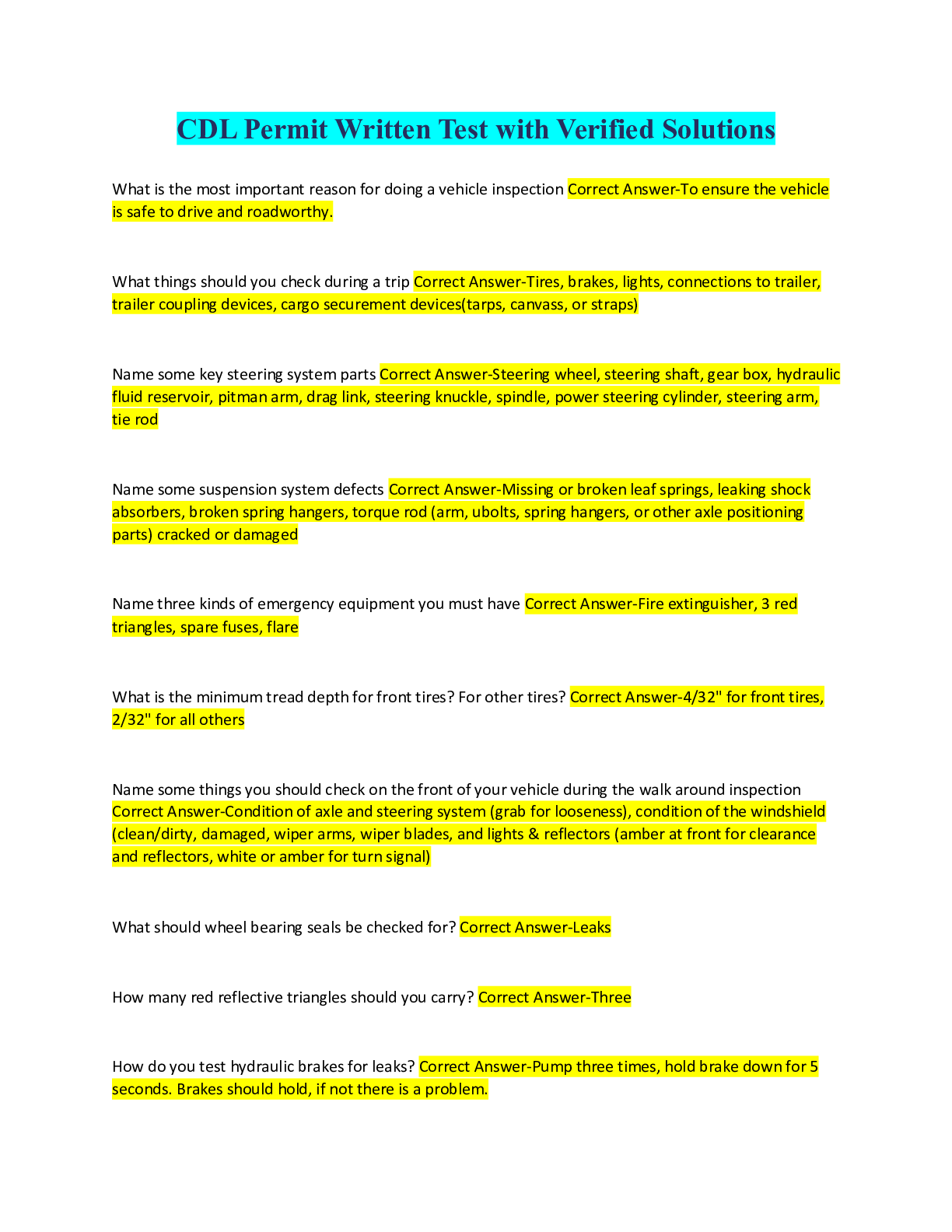

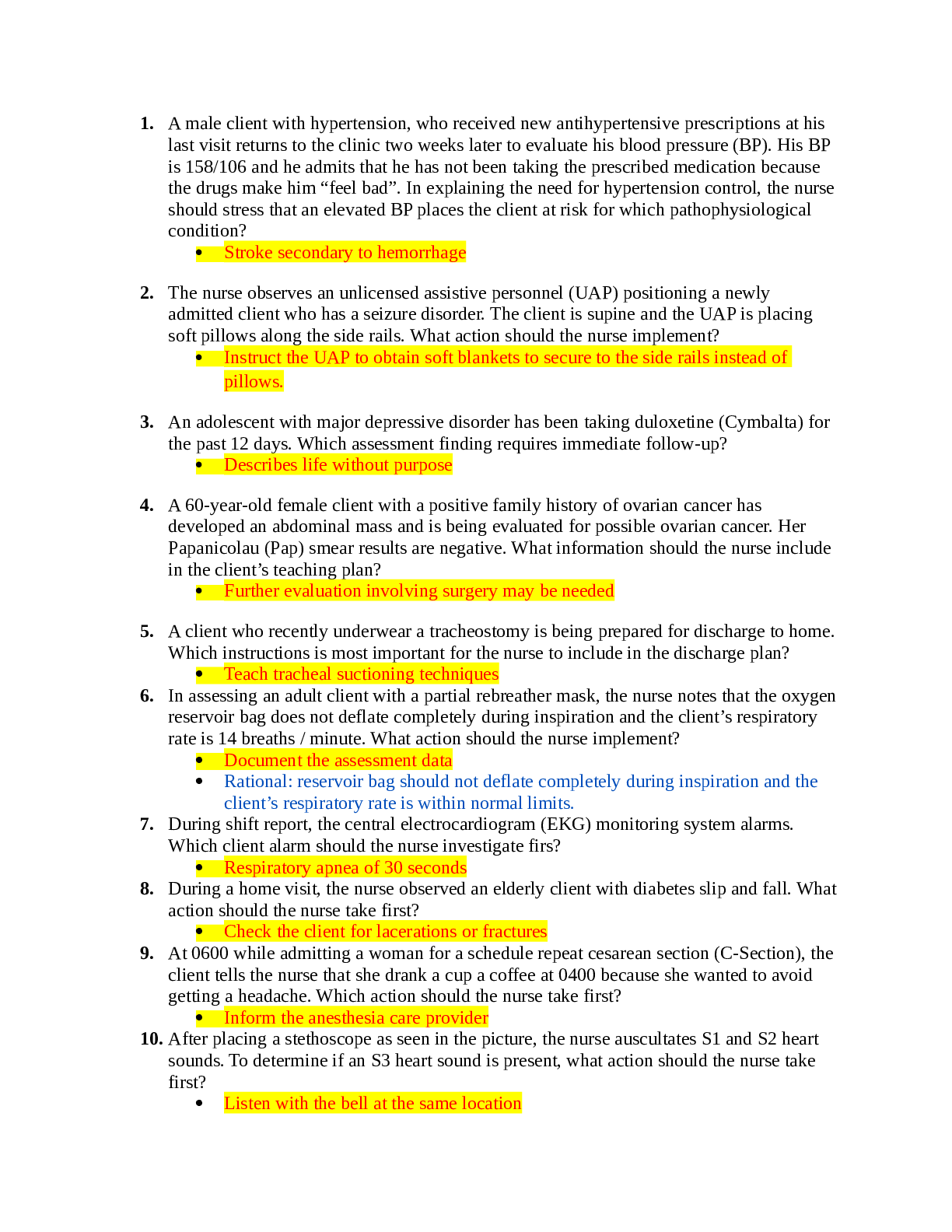

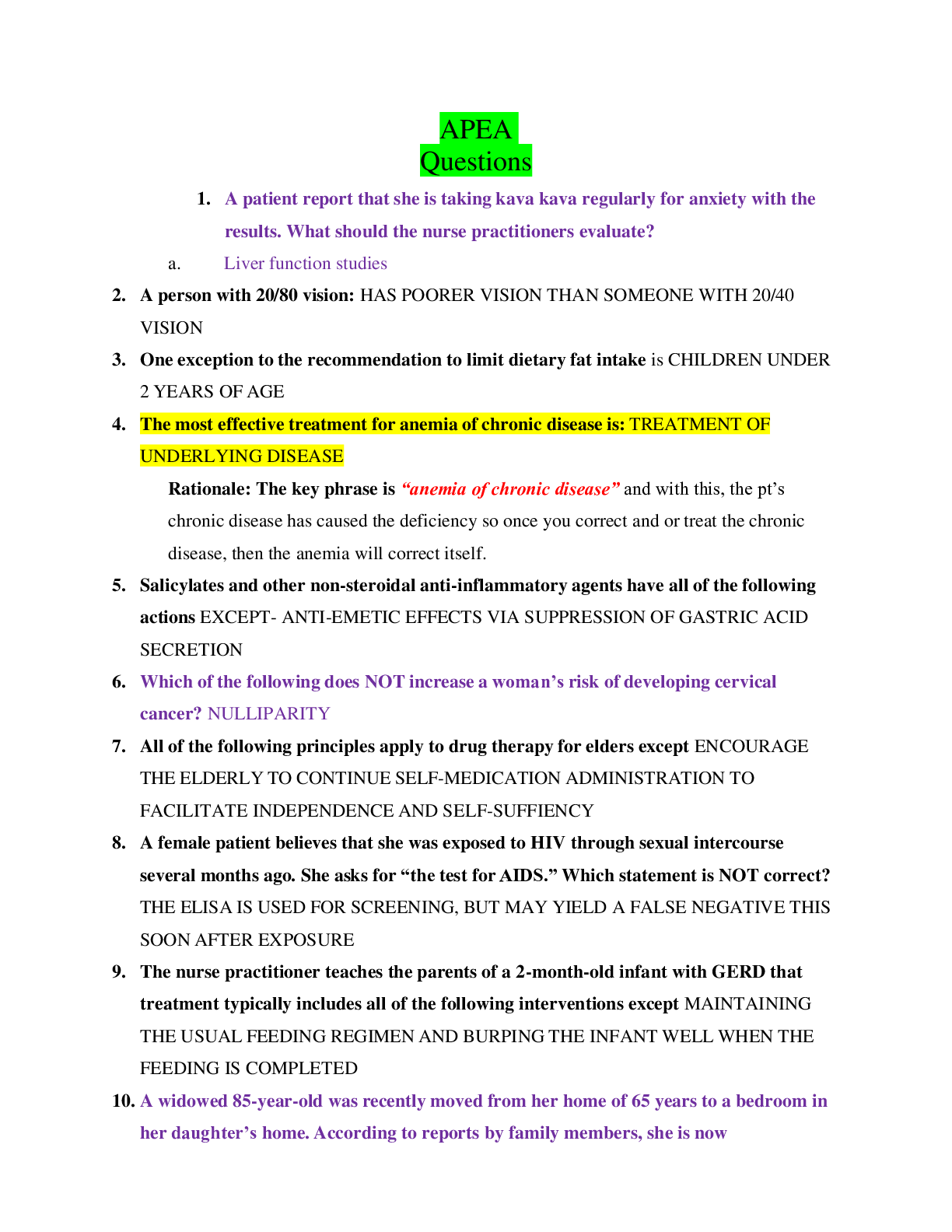




.png)

.png)

